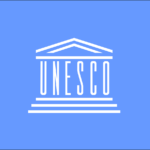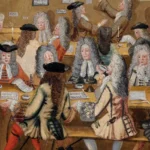SHORT VIDEOS (about 62 minutes)
- In this 3-minute interview with OSI2016 delegate and UNESCO open access manager Bhanu Neupane, Dr. Neupane describes how an overarching policy on open access is essentially lacking in Latin America and how working together toward open access shouldn’t be a competition. https://www.youtube.com/watch?v=TdlwIkeozik (CLACSO: Nov 2015)
- Why open access? This 2-minute promotional video from the Coalition of Open Access Policies (COAPI) gives the high-level pitch for why open access is important. https://www.youtube.com/watch?v=UcXpF8bU714 (COAPI: Oct 2015)
- In this 3-minute video from University College London, UCL researchers discuss why OA is important to them and to their research. http://bit.ly/1Q8GsDq (UCL: Jan 2016)
- In this 2-minute NIH interview with Pieter Dorrestein of UCSD, Dr. Dorrestein describes some of the challenges and promises of open data. https://www.youtube.com/watch?v=WTfYTMT95Qc (NIH: Jul 2015).
- In this 5-minute 2014 interview with OSI2016 delegate Martin Paul Eve, Dr. Eve talks about the open access challenges that are specific to the humanities. https://www.youtube.com/watch?v=PdFuUNdG7Q4 (Cambridge: Nov 2014)
- In this 11-minute presentation at the 2010 4th World Congress on Controversies in Neurology (CONy), Dr. Rudy Castellani takes an interesting “consumer perspective” against open access publishing (Dr. Castellani is a pathologist by training, not a publishing expert, but he presents a lucid case for a wide range of concerns about OA). http://bit.ly/1oN8I5D (4th World Congress on Controversies in Neurology: 2010).
- What impact would there be on science if everything was published, not just positive results? In this 13-minute TED video, Ben Goldacre suggests that about half of all clinical trials are buried, and positive findings are twice as likely to be published as negative findings. What is the impact of this publication bias on medicine and public health? Is this research misconduct? http://bit.ly/21xqKXp (TED: Jun 2012)
- Why CC-BY? In this 18-minute TED presentation, Creative Commons founder Lawrence Lessig discusses the need for “common sense” in accommodating today’s remix culture. http://bit.ly/1jQB4cg (TED: Mar 2007)
- In this 4-minute video, Professor Douglas Kell from the University of Manchester explains the value of CC-BY in chemistry research. http://bit.ly/1Fgbrt4 (University of Manchester: Jan 2015)
ARTICLES & REPORTS (to browse/skim)
- Open access can be an alphabet soup of colors and acronyms. This old but still very useful web page by OA pioneer Peter Suber does a great job of explaining what’s what: http://legacy.earlham.edu/~peters/fos/overview.htm (Suber: 2012). For an even better description of OA, download Suber’s seminal treatise on this subject (linked below under optional reading).
- How did the modern open access begin? On December 1-2, 2001, the Open Society Foundation’s Open Society Institute (OSI) adjourned a meeting in Budapest of leading open access proponents. The goal of this meeting was to see how the many existing open knowledge initiatives could assist one another and how OSI could use its resources to help the cause. What came out of this meeting —the Budapest Open Access Initiative (BOAI)—is what we now recognize as the modern framework for open access in peer reviewed research literature. http://bit.ly/1x4anBg (BOAI: last updated 2012)
- How much open access is out there and how fast is it growing? This study by open access researchers Mikael Laakso and Bo-Christer Björk examines the recent adoption rates for OA. “Of the 1.66 million articles indexed by Scopus in 2011, 11% were published in full immediate OA journals, 0.7% as hybrid OA and 5.2% in journals that have a maximum OA delay of 12 months.Together, these account for almost 17% of the total article volume in the whole index. The figures for articles indexed by Thomson Reuters Web of Knowledge are comparable to those of Scopus, with a total publisher-provided OA rate of 16.2% for 2011.” http://bit.ly/1KQHXHk (BioMed Central: Oct 2012)
- Bjork and Laakso also collaborated on this 2014 paper examining the current state of green open access—how widespread it is as a percentage of all published works, as well as the current state of institutional repositories, mandates, and embargo periods. http://bit.ly/1LiVTd2 (Personal archive: 2012)
- “One of the inconvenient truths that the OA movement prefers not to discuss,” writes Richard Poynder, “is the fact that a large amount of the content in the circa 4,125 institutional repositories created by research institutions in order to provide open access to their research output is not actually freely available but on ‘dark deposit’, or otherwise inaccessible. In other words, it is not open access.” http://www.richardpoynder.co.uk/Almost-OA.pdf (Richard Poynder: Dec 2015)
- This paper by Raym Crow looks at the income models for open access publishing. It’s a little dated (2009), but still a good reference that documents options for the funding of open access. http://bit.ly/24tgfa9 (SPARC: 2009)
- What are some of the assumptions we make about the moral superiority of open access? This article isn’t definitive, but it does a good job of summarizing some of the key issues and questions in this discussion. http://bit.ly/1TDVNhB (First Monday: Feb 2010)
OPTIONAL VIEWING
- What is copyright anyway? In this video from the American Chemical Society (which has also produced many other great instructional videos on scholarly publishing), Eric Slater describes what copyright law does and does not cover in scholarly publishing. https://www.youtube.com/watch?v=M793q08cSy0 (ACS: Mar 2013)
- In this 8-minute August 2011 interview, Brewster Kahle describes the goal of universal access to our cultural heritage. The current challenge is establishing the roles, rights, and responsibilities of our libraries and archives in providing public access to this information. http://bit.ly/1n1Zn8k (Democracy Now!: Aug 2011)
OPTIONAL READING
- Peter Suber’s seminal 2012 book on open access is an easy read, and the most complete and authoritative description of OA available. http://bit.ly/1OS1LZO (MIT: 2012)
- Making clinical trial data more compete, open and immediate is a goal shared by many open knowledge advocates. But the road will be bumpy—and this is just the road we can see right now. http://bit.ly/1TDR8MD (NEJM: Oct 24, 2013)
- Is more open access the cure for Africa? Writes Williams Nwagwu, “In spite of the huge volume of information that is downloaded by African scholars on a daily basis, the real Africa and the real African contribution to global development can only emerge when Africa is able to create, store and disseminate, and sustain its own knowledge and technology, and contribute this to world knowledge stock. Presently, what is happening is that Africans are avalanched by scientific information produced elsewhere with the expectation that such information would help them produce their own information. This dissonance is not even recognized locally…. The extent and level of sophistication in modern science have probably intimidated African scholars from exploring their indigenous wealth of knowledge.” http://bit.ly/1QixN2u (Journal of Academic Libarianship: January 2013)
- Article-processing charges alone are not enough to assess the financial impact of open access on universities. New hybrid arrangements consist of APCs in combination with subscription costs. Writes author Stephen Pinfield, “It is becoming increasingly important therefore that institutions understand the total costs for a given publisher’s products to manage their resources effectively.” http://bit.ly/1XQ1gST (Wiley: Feb 2015)
- In his 2008 “Guerilla Open Access Manifesto,” Aaron Swartz said that sharing information was a “moral imperative” and advocated for “civil disobedience” against copyright laws pushed by corporations “blinded by greed” that led to the “privatization of knowledge.” http://huff.to/121xRgZ (Huffington Post: Feb 2013)
- How do academic institutions manage an online open access research repository? What are the steps in this process? This tutorial from Stellenbosch University Library gives a good overview of the repository universe. http://bit.ly/garpir (Stellenbosch University).
- In this 2012 report from the DC-based Committee for Economic Development, the costs and benefits of increased public access at NIH are examined. For a quick review of the conclusions and recommendations, start on page 35). http://bit.ly/1LiXrUo (CED: 2012)
- What is some of the more important (and still active) legislation involving open access? The SPARC website provides a good summary of FASTR (http://sparcopen.org/our-work/fastr/) and the February 2013 White House directive on public access (http://bit.ly/1QlxkJy).










